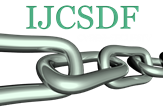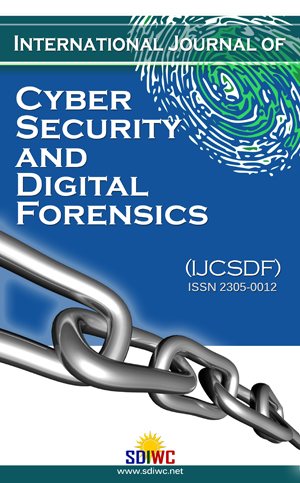International Journal of Cyber-Security and Digital Forensics (IJCSDF)
A Peer Reviewed, Refereed, Indexed and Leading Journal in Cyber Security and Digital Forensics
ISSN 2305-0012 (online)
Seiten 170-182
Vol. 3, No. 3
Year of publication 2014
Date of publication 2014-07-31
Owner: The Society of Digital Information and Wireless Communications
Published by The Society of Digital Information and Wireless Communications
Miramar Tower, 132 Nathan Road, Tsim Sha Tsui, Kowloon, Hong Kong

Abstract. In recent years, the number of attempts to use digital audio and video evidence in litigation in civil and criminal proceedings has increased. Technical progress makes editing and changing music, film and picture recordings much easier, faster and better. The methods of digital sampling differ from the conventional pirated copy in that using a sample involves extensive changes and editing of the original work. Different digital sampling methods make the technical analysis and the legal classification more difficult. Targeted analysis methods can clearly identify a case of sampling and belong to the main field of forensic analysis. If persuasive evidence of an unauthorized use of sampling cannot be produced, the proof is useless in the legal process. Labelling technologies that are applied correctly make an important contribution to the effective detection of unauthorised sound sampling. There are hardly any holistic approaches that integrate the problem of sound sampling into the fields of analysis, identification, and labelling. In combination with specific technical protective mechanisms against sampling, an unauthorised use of samples protected by copyrights can be prevented or reduced. Using and sampling somebody else’s piece of music or video can be a copyright infringement. The copyright and the neighbouring rights of performing artists and the neighbouring rights of phonogram producers are affected by the consequences of illegal sampling. Part 1 of the article introduces the problems of digital audio sampling, Part 2 describes the typical manifestations of sampling, Part 3 illustrates various analytical procedures for the detection of audio sampling and Part 4 shows the identification by labelling strategies.
Conditional acceptance for special issue publication in the International Journal of Cyber-Security and Digital Forensics (IJCSDF). Visit www.sdiwc.net.
The International Journal of Cyber-Security and Digital Forensics (IJCSDF) is a knowledge resource for practitioners, scientists, and researchers among others working in various fields of Cyber Security, Privacy, Trust, Digital Forensics, Hacking, and Cyber Warfare. We welcome original contributions as high quality technical papers (full and short) describing original unpublished results of theoretical, empirical, conceptual or experimental research. All submitted papers will be peer-reviewed by members of the editorial board and selected reviewers and those accepted will be published in the next volume of the journal.
Journal is currently indexed by:
Academic Journals Database
Academickeys
CiteULike
Directory of Open Access Journals (DOAJ)
Directory of Research Journals Indexing (DRJI)
EBSCOhost
Gale | Cengage Learning
George Town Library
Google Scholar
InfoBase Index
IndexCopernicus
INSPEC
J-Gate
MediaFinder
Microsoft Academic Research
Open Academic Journals Index
Polish Scholarly Bibliography
ProQuest
ResearchGate
Research Bible
Scientific Indexing Services
Ulrichsweb
University of Saskatchewan
WorldCat

